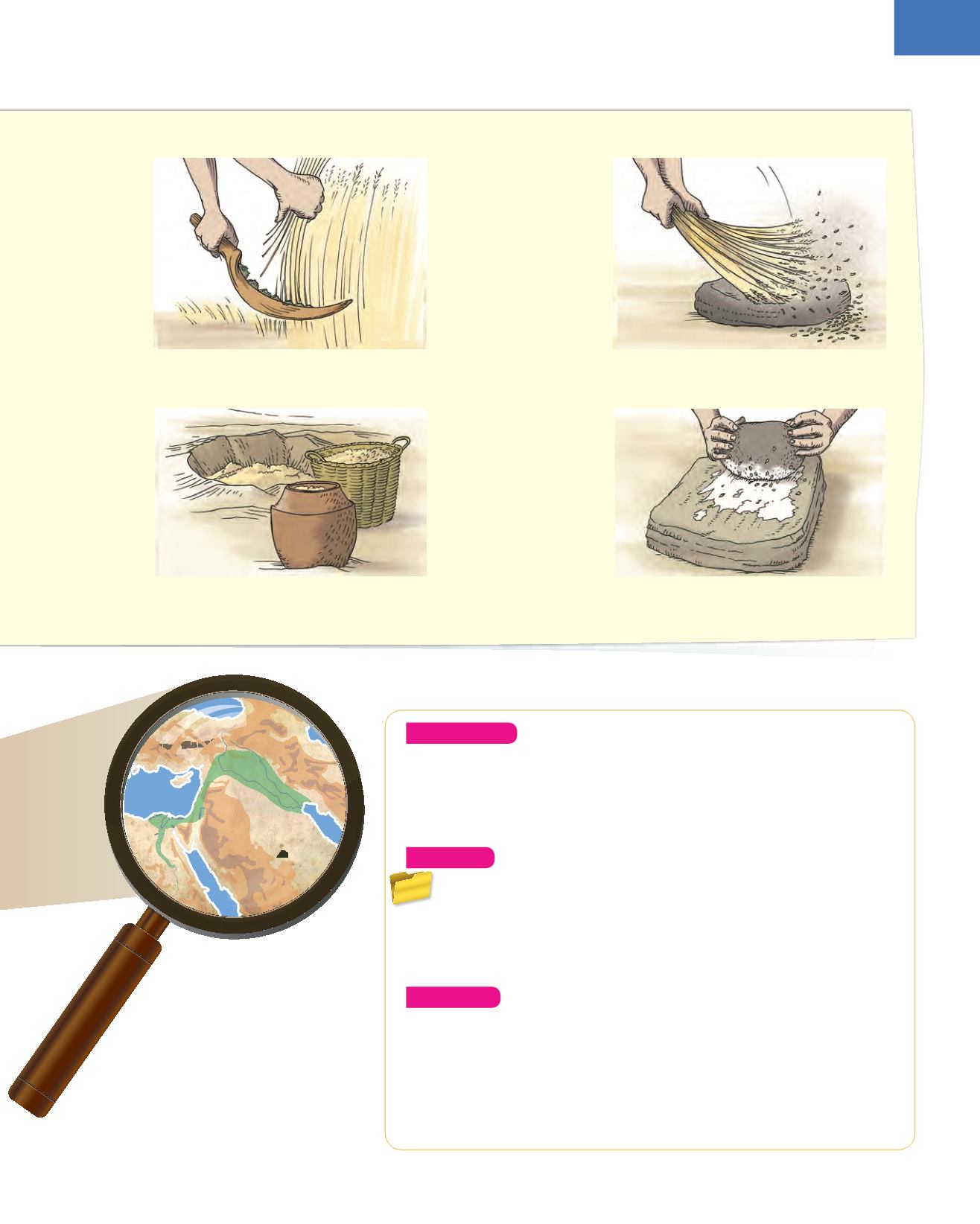
2
2. The Neolithic period and the Bronze and Iron Ages
29
WORKING WITH NEW TOOLS
Reaping
: when the harvest was collected,
the plants were reaped (cut) with sickles.
Threshing
: then the grain was separated
from the husks by threshing.
Z
a
g
r
o
s
M
o
u
n
t
a
i
n
s
Nile
T
a
u
r
u
s
M
o
u
n
t
a
i
n
s
Tigris
Euphrates
Arabian
Desert
Mediterranean
Sea
R
e
d
s
e
a
E
GYPT
M
ESOPOTAMIA
Storing
: the grain was initially stored in
holes in the ground; later, ceramic pots were
invented.
Milling
: next the grain was ground with
hand mills to make flour.
1
sow
:
spread seeds on the ground to grow
plants
5 5
5
5
Remember
1.
What consequences did the discoveries of agriculture and livestock
farming have?
2.
Look at the process for making bread and then describe in your
notebook each stage of the process and why it was done.
Analyse
3.
Draw some of the new Neolithic tools in your notebook. Write the
name of the tool and what it was used for, under each one.
4.
Look at the map. Which places in the world did agriculture appear
in? Where did the agriculture that arrived on the Iberian Peninsula
come from? Which route did it come by?
Evaluate
5.
The domestication of animals not only created a steady supply of
meat, milk and wool. Some of these animals were also used for
other purposes. What were they used for?
6.
What do you think the relationship between the inhabitants of the
first Neolithic villages and the members of the Paleolithic tribes
was like?


